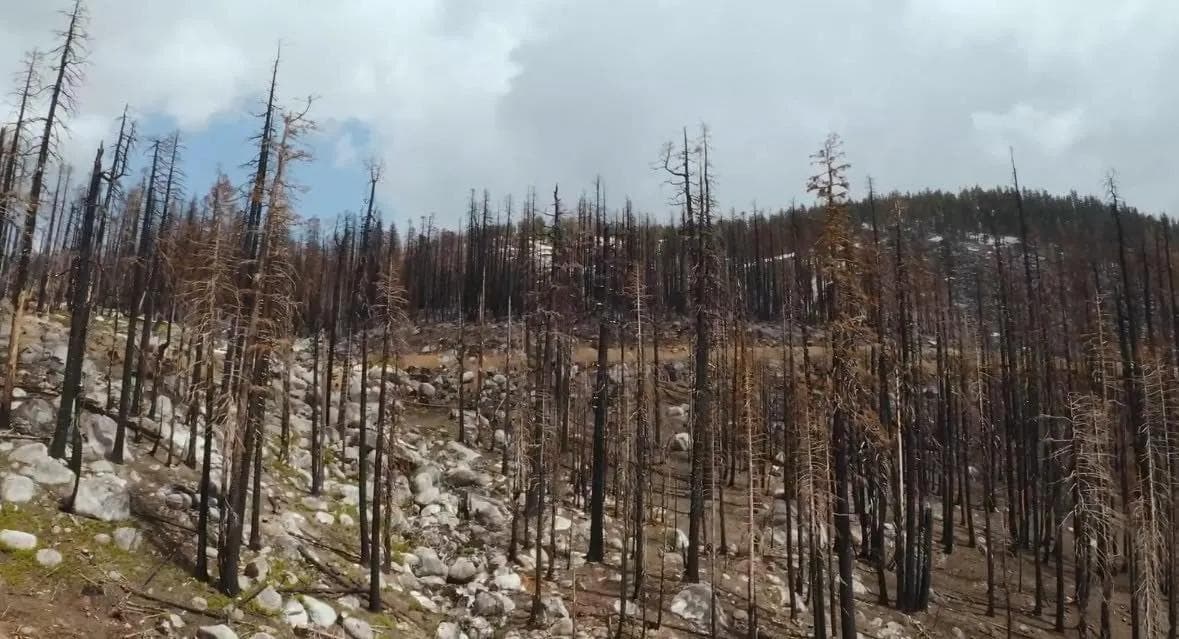
Sierra At Tahoe Updates On Terrain Restoration + 23/24 Season Prep
Published Date:
Get ready because Sierra at Tahoe is about to make a grand entrance. Phase 02 of the restoration project is now in progress, and from the looks of it, the upcoming season promises even more excitement. Anticipate new trails, larger bowls, and the exciting opportunity for guests to explore some of the most buzzed-about new ski terrain.The focus of the remediation and abatement efforts is on the gladed areas that were closed off last season, including sections on the East Side, Backside, and Avalanche Bowl. The ultimate aim is to provide you with complete access to the terrain for the upcoming 2023/24 season.Prepare for a year filled with firsts – from new lines to fresh drops and thrilling adventures. This experience is all yours to embrace. Discover the latest updates on the restoration process below, and secure your Season Pass now before prices increase after September 30th. Check out the full update from Sierra at TahoeWhat's Happening at Sierra? So here’s the scoop. Phase 02 restoration began in early July with the goal of removing the remaining fire-damaged trees in all gladed areas that were closed off last season based on the prescription of the foresters of the USFS. What does this means for guests? Re-opened access to all of the gladed areas that were closed last year- stoke level ignite 🚀 (as always, conditions permitting*). The East Side, Backside + Avalanche Bowl are the main areas getting a serious ‘glow up’ this summer with some much-needed TLC ahead of next season. The level of remediation effort varies in each area, and is ranging from minimal tree thinning to full tree removal. It's all dependent on the level of damage from the fire.The El Dorado RCD and USFS are following proper protocols and acting with the utmost sensitivity to leave as many healthy trees as possible for those freeriders + skiers to enjoy. The crews are up against some hurdles with areas of heavy tree mortality not initially included in phase 01 that were impacted by the fire in these gladed areas. Gladed zones include: The eastern areas between Rerun + Castle The eastern areas of Castle + Preacher’s Passion going towards the Grandview rope line The backside (Huckleberry Canyon) The front side (Avalanche Bowl, areas around Chute + Main) These areas store special, core memories for many of us, and one thing we can all agree on is, the love for this mountain runs deep . Sierra along with The El Dorado RCD, and the United States Forest Service are rallied around a common goal- to preserve what we can and remove what we must.

Eastside looking upward before tree assessment + removal. Credit: Sierra-at-Tahoe Fire Aftermath: Tree Mortality The deeper impacts of the fire are starting to show with tree mortality happening across the mountain. Tree mortality is a natural process in forest ecosystems after going through nature disasters. Natural effects can include the spread of beetles, disease impacts or stress from large-scale regional weather events, such as severe droughts or fire. Delayed mortality is common in burned forested landscapes for up to ~5 years, and more trees are anticipated to die due to the delayed effects of the fire.Most notably, the Western White Pine is taking a big hit from pine beetles and in the Red Fir, the fir engraved beetles. We are also starting to see evidence of bug activity in the Mountain Hemlock which is experiencing scattered mortality as well. Prior to removal, Forestry crews are performing White Bark Pine surveys to ensure only decaying trees are marked.

Tree feller near Thunder Gulch Credit: Sierra-at-Tahoe One important note is that we are not alone, and this isn’t just happening at Sierra . The entire footprint from the Caldor Fire is experiencing similar lasting impacts of tree mortality from the burn. The fire was out of our control, but what's important is how we react to it. We will work alongside Mother Nature in her recovery, and enjoy every phase of this mountain's rebirth.All The Details You’ve been Axing alll the right questions, and we’ve got answers. Timeline: July 01: Phase 02 restoration began August 07: Helicopter work began with a Chinook to transport logs from hard-to-access areas to a staging site August 15: An estimated 2.5 million gross board feet* have been delivered to Tahoe Forest Products to date (TFP)Approximately 30-40 truckloads of timber a day being delivered from Sierra to TFPEach log can weigh up to 10,000 poundsSimilar to last summer, merchantable timber will be loaded and transported to Tahoe Forest Products in Carson City, Nevada. Non-merchantable timber will be chipped and broadcast around the mountain as insulation for runs to assist with snow preservation, especially in the early + spring season.



